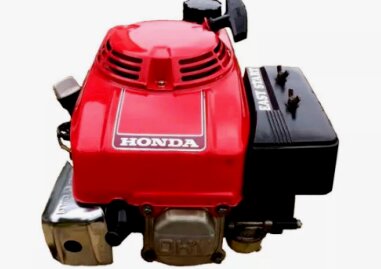____________________________________________________________________________________
| Home / Small Engines / Honda Engines / Honda GXV120 |
Honda GXV120 Troubleshooting
| Engine Model: Honda GXV120 |
| Engine Type: 4-cycle 1-cylinder air-cooled gasoline engine |
| Total Displacement: 7.2 cu.in (118 cc) |
| Rated Engine Power: 4.0 Hp (2.9 kW) at 3600 rpm |
| Carburetor Type: Horizontal, butterfly valve |

____________________________________________________________________________________
- Honda GXV120 Engine Specifications
- Honda GXV120 Engine Maintenance
- Honda GXV120 Engine Troubleshooting
| Engine will not start or hard to start |
Empty fuel tank - Add gasoline.
Wrong fuel grade - Use correct fuel grade.
Air in the fuel system - Air bleeding.
Damaged spark plug wiring connection - Inspect the spark plug wire connection, replace or repair.
Spark plug is faulty - Install new spark plug.
Dirty fuel filter - Install new filter.
Faulty safety switch - Change damaged switch.
Carburetor settings incorrect - Adjusting as required.
Bad engine compression - Inspect cylinder block and replace worn components.
Worn or improperly adjusted choke cable - Adjust properly or replace the cable.
| Unstable engine running |
Plugged cooling fins - Need to clean or wash.
Ignition system failure - Check ignition system and replace faulty parts.
Stuck or faulty throttle cable - Clean or change the cable.
Air filter is dirty - Service or replace air filter.
Dirty or faulty fuel pump - Check fuel pump and replace if necessary.
| Engine starts but stalls immediately |
Damaged spark plug - Replace spark plug.
Carburetor is faulty or dirty - Replace or service carburetor.
Damaged ignition coil - Install a new ignition coil.
Damaged or weak valve springs - Replace valve springs.
Valves are stuck - Valves need to be cleaned.
| Engine overheats |
Engine oil level is low - Fill up the oil to required level.
Engine is under excessive load - Reduce the load.
Cooling fins are blocked - Wash or clean as required.
Carburetor mixture is too lean - Use proper settings.
Ignition timing is incorrect - Ignition timing needs to be set properly.
Wrong valve setting - Set the valves properly.
| Engine noises or knocks |
Low octane fuel - Use correct fuel.
Excessive engine load - Reduce engine load.
Engine oil level is low - Fill up the engine oil.
Low idle speed set incorrectly - Correct idle adjustment.
Fuel pump is faulty or clogged - Test fuel pump and change if necessary.
Worn crankshaft or main bearings - Change defective components as required.
Valve clearance is not correct - Adjustment procedure required.
Damaged piston rings or cylinder bore - Replace faulty parts.
| Engine lacks power |
Carburetor is clogged or incorrectly adjusted - Adjust the carburetor correctly or clean it.
Air filter element is clogged - Clean or replace air filter.
Dirty or damaged fuel pump - Test fuel pump and change if necessary.
Ignition failure - Inspect ignition system and change failed components.
Cylinder head gasket is defective - Cylinder-head gasket replacement required.
Stuck or burned valves - Replace or service valves.
Worn or damaged push rod - Change push rod.
Cylinder block components are worn - Defective parts need to be replaced.
Oil filter element is clogged (if equipped) - Service or replace oil filter.
| High fuel consumption |
Choke is not fully open - Check choke cable and adjust it.
Incorrect adjustment of carburetor main jet - Adjust the carburetor main jet properly.
Faulty or loose spark plug - Re-tighten or change the spark plug.
Valves are stuck, worn, or burned - Change or service valves.
Worn sleeve, piston, or rings - Change defective components.
Valve clearance is improper - Adjustment procedure required.
| Excessive oil consumption |
Gaskets or seals may be damaged - Replace defective parts.
Worn valve guides and valve stems - Valves must be replaced.
Damaged or seized piston rings - Change piston rings.
Damaged cylinder liner or piston - Inspect piston and liner, change as required.
Plugged breather pipe or hose - Clean or change.
____________________________________________________________________________________

